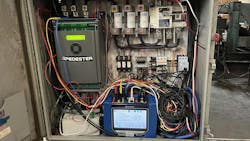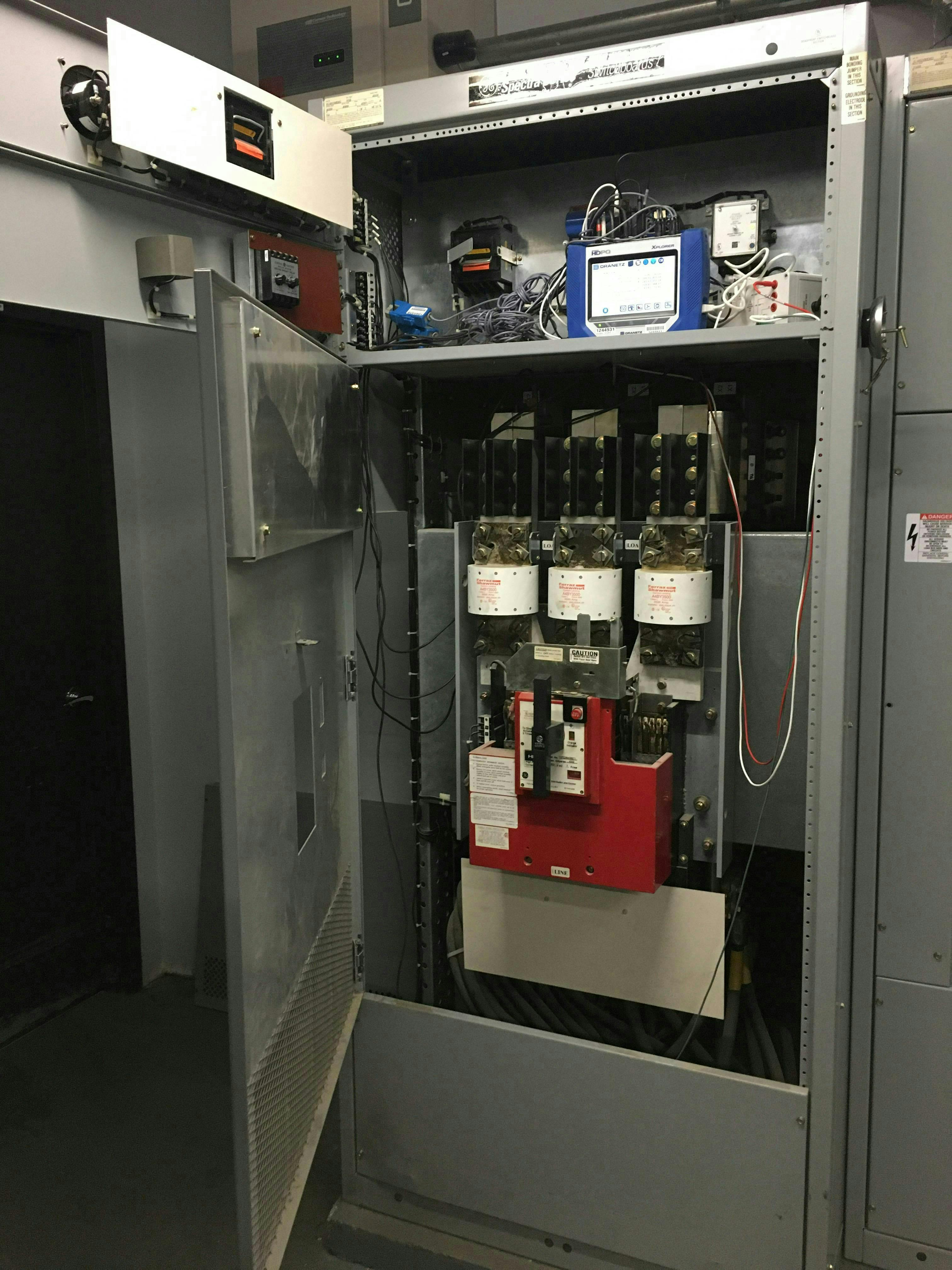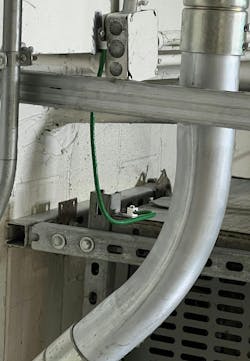Reduce plant O&M costs with power quality measurements
All aged, upgraded, and new wastewater treatment plants (WWTP) have inherent hidden power quality (PQ) problems.
Their causes are typically complex, intertwined, and difficult to find. Because of this, PQ problems are left to repeatedly occur. These problems can cause critical processes and equipment to shut down, impact plant performance, and increase O&M costs annually.
If the underlying causes are not found, the costs of plant and equipment downtime, unplanned repairs, fines, and undesired public exposure escalates. The characteristics of WWTP plant electrical systems (PESs) mixed with the characteristics of non-electronic/linear loads (NELs) and electronic (non-linear) loads (ELs) precipitate these problems.
The regular occurrence of equipment shutdowns, malfunctions, and failures causes premature aging of PES components and loads and unexpected water quality problems. One must first understand these interdependencies (between voltage, current, the PES and all loads) exist before trying to understand the causes and findings. Specifying solutions must be handled carefully to avoid introducing other PQ problems. Understanding the interdependencies is difficult and requires decades of knowledge and experience. Understanding the causes and findings will help one to craft the solutions and preventions.
The good news is that with a well-planned approach based on experience and knowhow, the causes of PQ problems in WWTPs can be understood, identified, solved, and prevented—the proven UISP approach. Even better, what water professionals can learn from properly addressing these problems in a few plants can be applied with expert assistance to other WWTPs.
Common power quality questions wastewater professionals ask
Plant and maintenance managers, engineers, and technicians frequently ask the following questions about wastewater plant power quality:
- What does it mean to have good internal plant PQ?
- How can we go about integrating PQ into our plant?
- What causes my PQ problems?
- How can we find and resolve them?
- How can we prevent them from recurring?
- How can we protect our processes, our PESs, and critical loads?
These questions can be answered by first considering the design philosophy of PESs in WWTPs — a philosophy based on the need to power simple linear 60-Hertz loads: incandescent lamps, motors, and strip heaters 75 to 100 years ago. When these loads are powered, turned on, and turned off, the quality of the current through the PES, the voltage across the PES and at the terminals of the loads is acceptable and does not cause PQ-based PES & equipment problems.
When common everyday disturbances from normal grid operations, thunderstorms, and load interactions occur, the performance, reliability, and life of these loads are much less affected. The bad news is that WWTPs still use traditional PESs but not with linear loads.
The shift towards larger electronic loads & digital controls
WWTPs have been rapidly shifting to use higher power electronic loads and digital control systems to improve efficiency and enhance process control.
Variable frequency drives (VFDs) as large as 5,000 hp are being operated on PESs with wiring and grounding (W/G) problems that precipitate disturbances affecting sensitive digital controls. Digital controls are much more sensitive to disturbances than analog.
This shift and the increased need for plant performance and reliability requires that water professionals invest in identifying hidden PQ problems and implementing measures to resolve them to harden their plants and meet prescribed immunity requirements for PESs and the critical equipment they support. Present plant infrastructures are not capable of managing disturbances to lower their risk to sensitive controls.
The Lingering Problem
PES designs and installations are also based on the more than 100 year old NFPA 70 Standard – The National Electrical Code (NEC). The requirements in the NEC was written by insurance companies to manage risks and reduce the likelihood of electrical fire and shock in end user electrical environments. They were not written to help end users manage (or improve) PQ across the plant’s PES and at the terminals of the large and small electronic loads.
This means that properly managing PQ to control plant performance, PES and equipment load behaviors, and O&M costs cannot be accomplished solely by ensuring a plant’s PES and its equipment installations meet the NEC.
Two reasons NEC does not meet all power quality needs
1. Imperfect PES Components
PESs are made up of basic devices (fuses, breakers, transformers, etc.), conductors (wire, cables, and buss bars), and the hardware (bolts, washers, nuts, etc.) that make up the many connections that form the feeder and branch circuits within a PES to distribute power to plant loads. By nature, these PES components are not perfect. Although small, each device, each inch of conductor, and piece of hardware has measurable resistance (R), inductance (L), and capacitance (C) values, they are not zero.
When powering NELs, these imperfections did not cause PES and equipment problems. The opposite is not true — powering ELs using present PESs causes PES and equipment problems. Powering ELs using weak PESs also increases the susceptibility of PESs and its critical equipment to disturbances originating from thunderstorms.
2. Problem-Causing Installations
PES components must be installed in relatively tight spaces (inside walls, up in ceilings and under floors). For example, cables are run in conduits, and conduits are run close together. Cables also have insulation which increases their inductance and capacitance. When installed, the total resistance, inductance, and capacitance across the PES increases. As PESs age, these values increase even more.
The fundamental problem is WWTPs are using traditional imperfect PESs to power critical ELs. The PES technology has not kept up with the EL technology. Because of this, we must find the “weak links” in the PESs, then make the necessary PES changes to remove them, which strengthens the PES. Then carefully add PQ mitigation devices and systems to further enhance PESs and EL performance. Deviating from this approach will increase risks, waste money, and prolong the problems.
The benign effects of powering linear (non-electronic) loads on a PES
When ELs are powered on a PES (even one that has aged), the smooth nature of the current when flowing through the irregularities of the PES components does not produce voltage disturbances (i.e., fast changing voltages) across the PES.
In other words, the voltage across the PES is not affected by the imperfections of the PES as a whole, regardless of whether the load is turning on and of or is continuously operating. In addition, the smooth regular nature of the current does not cause other unwanted currents to be drawn from the power source (today, the utility transformer, but tomorrow the local solar farm).
For example, a regular motor that draws 100 amps of 60-Hertz current connected straight to a 480-volt branch circuit will draw 100 amps of 60-Hertz from the power source. The conductors were also originally designed to support 60-Hertz current, so the properly rated (i.e., sized as in wire gauge) wires, cables, and buss bars are carrying what they were designed to carry: smooth 60-Hertz current.
Moreover, when the PES is “thumped” as is the case when lightning strikes from passing thunderstorms, the PES feels the disturbance and that disturbance current flows within. However, the linear loads are not affected. This means that the PES and its loads can withstand a higher number of nearby strikes. However, a direct strike to the plant may damage the motor, but the system where the motor is used is less likely to fail over time.
The negative effects of powering electronic loads on a PES
All electronic loads draw irregular current filled with low and high frequency disturbances. The current they draw is not smooth or continuous and contains current at frequencies higher than 60 Hertz.
The current changes very quickly (within microseconds, or one-millionth of a second), all within one cycle (1 cycle is 16.67 milliseconds). Because each EL draws irregular current, these irregular currents add up and become larger upstream. In several cases, there’s more irregular current than 60-Hertz current.
Since plants started installing electronic loads: industrial power supplies (IPSs), programmable logic controllers (PLCs), and VFDs on these same PESs designed to manage 60-Hertz power, maintaining voltage and current quality throughout the PES and at the terminals of the loads became increasingly difficult.
This causes the management of electronic equipment performance and reliability to be much more difficult. Managing PQ in these plants is an exponential problem that is still occurring today. The more electronic loads a PES must support, the more PQ problems there are and unplanned costs that managers, engineers, and technicians will experience. This is why so many WWTPs experience so many PES and load problems impacting their budgets every year.
Common findings
Specific examples of the causes of PQ problems in WWTP are too many to list — about 300 different types exist.
While some of the causes seem minute, they can have a tremendous impact on PES stability and equipment performance. Causes range from weak links in the plant’s grounding system, high conducted noise on power and control circuits, areas of high harmonics and distortion on switchgear buses and feeder cables, incorrectly installed and unrated surge protection devices, co-mingling of loads on circuits supporting critical and sensitive equipment, and disturbance-causing equipment.
About the Author
Philip Keebler
Senior Power Quality Consulting Engineer
Keebler has worked for over 25 years in power systems/quality and its effects on electronic equipment, customer facility power systems & the utility power system. His experience allows him to understand the problems and apply the solutions from a systems perspective. The future for sensing on-coming problems before they impact society, and cause financial losses and catastrophic failures is bright and exciting. New research, faster instrumentation and more effective analysis tools applied at all power levels and points along the entire chain will institute the next paradigm shift in how power is generated, delivered and utilized. One cannot leave out the education process vital to teaching the incoming workforce what we've all learned and how to apply it to ensure this growing industry.



